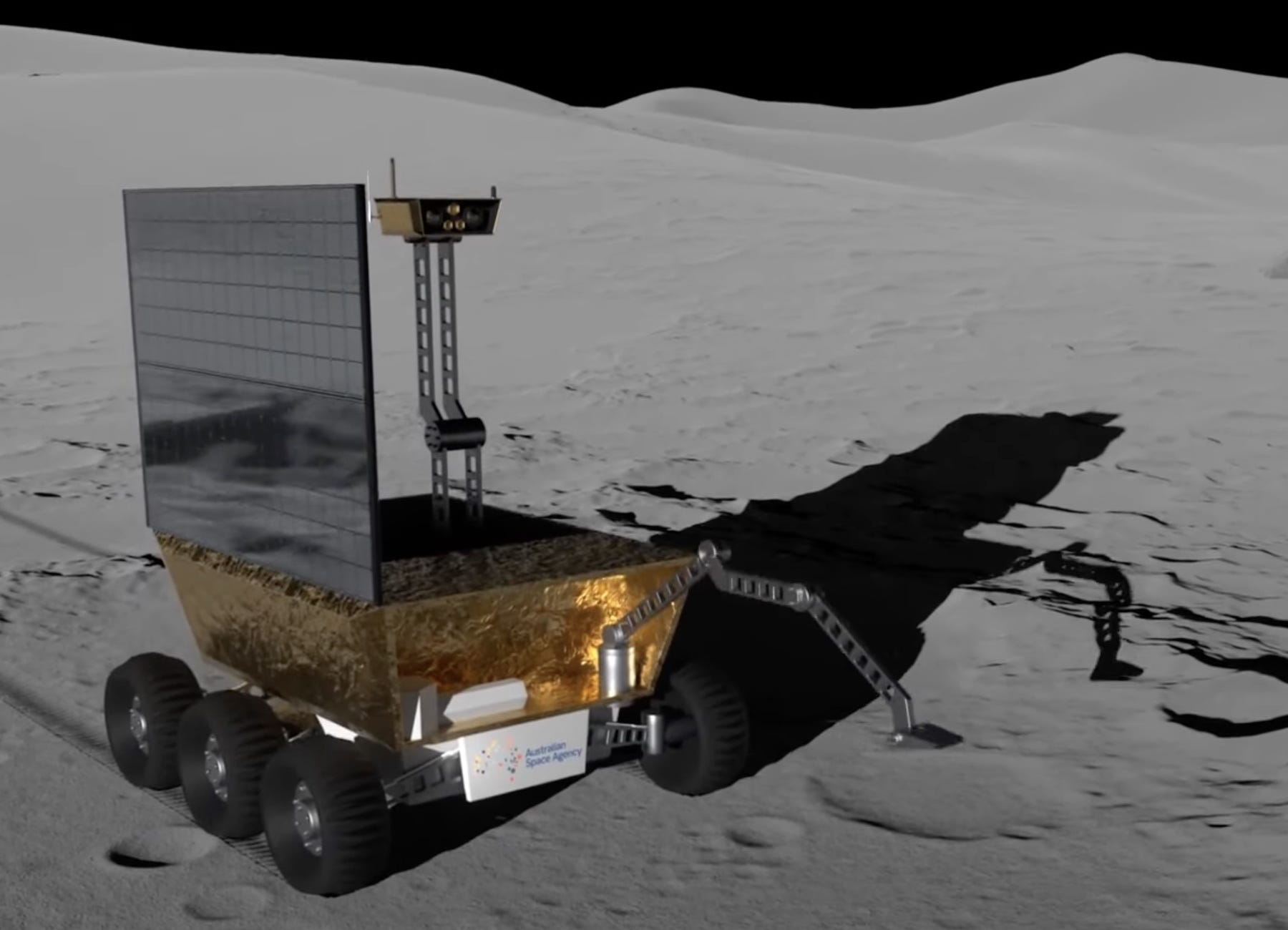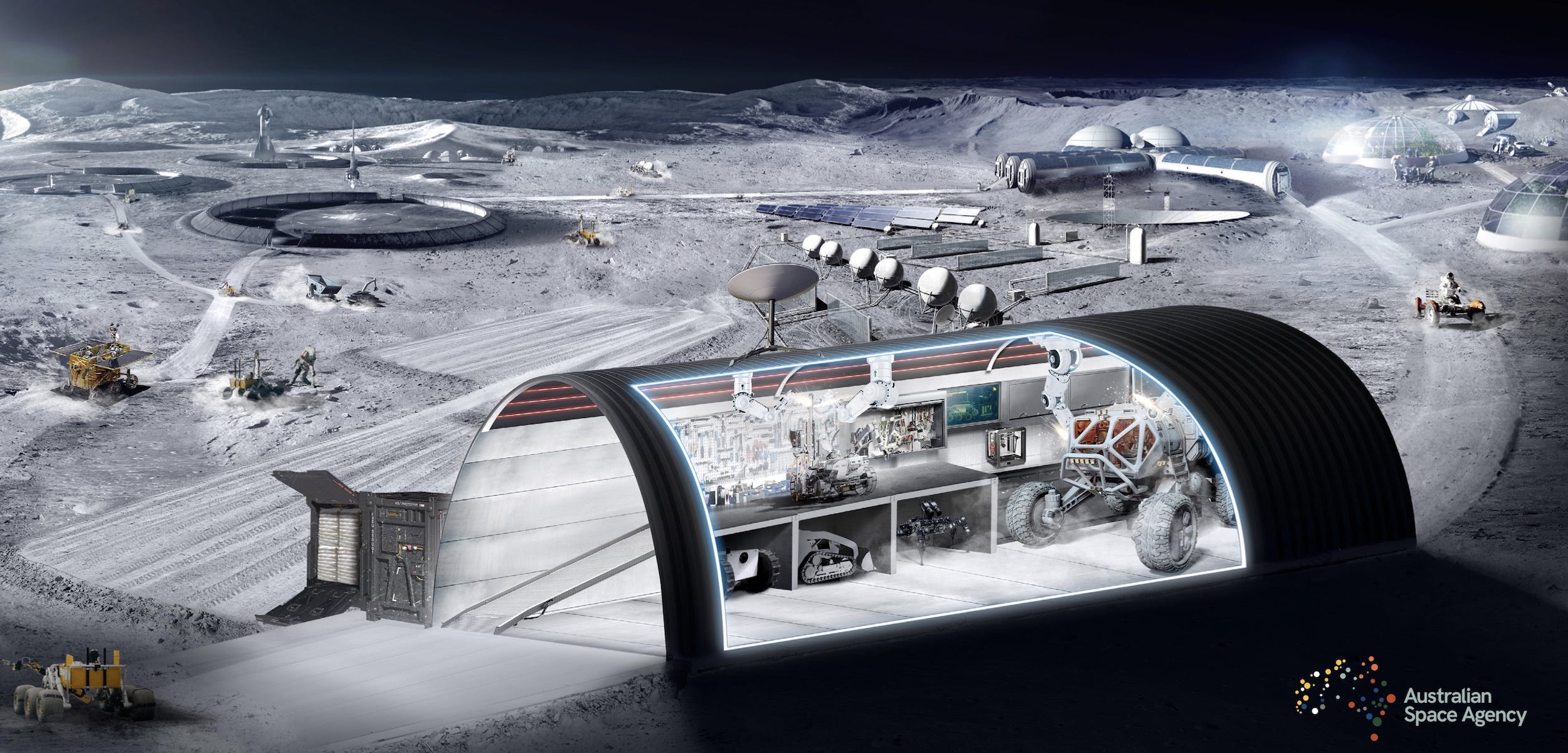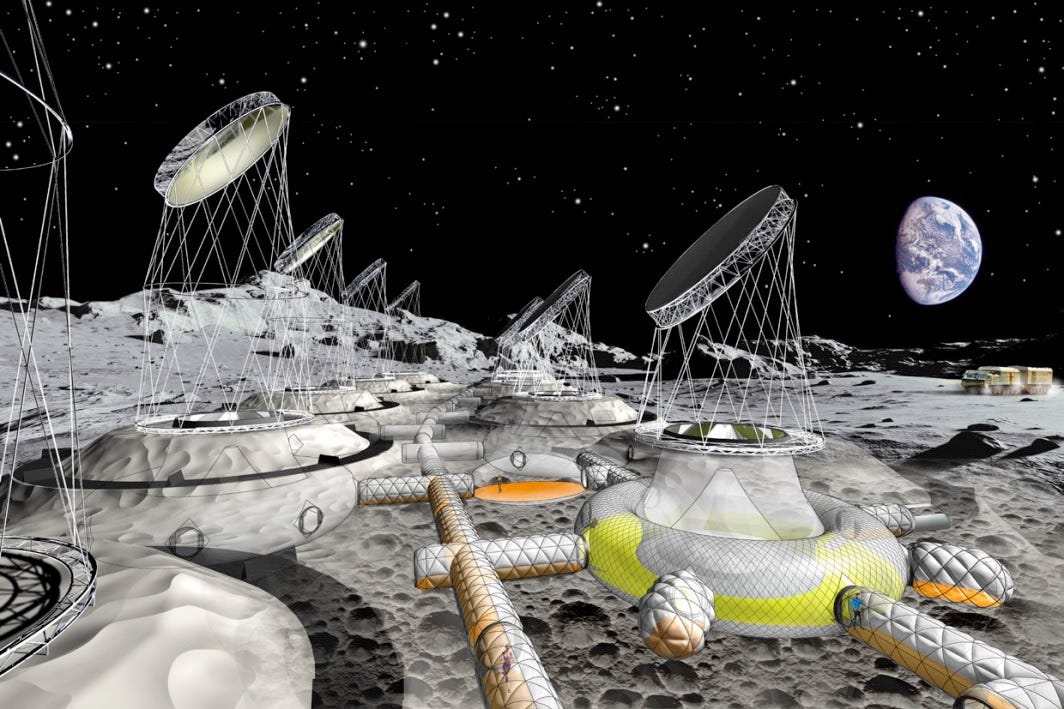Moon Monday #97: Australia aims for Luna, CLPS evolves towards enhance science, and more updates
A look at Australian efforts to explore our Moon
A little over 3 years after being founded, the Australian Space Agency announced its first Moon mission in October 2021. The agency will soon competitively fund an Australian industry consortia to develop the mission’s lunar rover for a maximum cost of (Australian) $42 million. The sub 20-kilogram rover will fly to the Moon onboard a NASA-funded CLPS lander, targeting a 2026 launch. The rover will explore the Moon’s south pole semi-autonomously, and retrieve lunar soil for the lander where a NASA-operated system will practice extracting oxygen from it as a precursor to a technology needed to sustain human presence at the Moon. (The oxygen extractor system is very likely ESA’s compact and power-efficient PROSPECT, which includes a drill, an oven and spectrometers to detect and study water and other resources.) Matt Ryall has more lunar rover details on his Aussie Space Cast.

This U.S.-Australian partnership on the mission isn’t a one off. Australia is a founding signatory of the U.S.-led Artemis Accords, which intends to promote cooperative lunar exploration. As NASA grows its robotic and human presence at the Moon leading to Artemis Base Camp, Australia hopes to provide lunar services in areas where they have strong expertise, such as remotely operating terrestrial mining systems, which is what convinced NASA to partner with the country in the first place. On the other hand, Australia benefitted from consulting with NASA and other international experts when forging their lunar plans while also getting their rover a ride to the Moon without having to develop arduous landing technologies themselves, in the same vein as the upcoming Canadian rover flying on a CLPS lander mid-decade.
The rover is the beginning of Australia’s lunar ambitions. Their recently released 10-year space robotics roadmap highlights the nation’s keen interest in developing “Foundation services” necessary for achieving permanent off-Earth outposts. One such goal is to have remotely operable and/or autonomous systems that can build and maintain infrastructure on the Moon starting end of decade. By then, Australia also intends to launch reconnaissance orbiters to better map minerals, water ice deposits, and lava tubes below the Moon’s surface. To that end, Australia recently funded the development of an advanced, unique ground penetrating radar prototype, which despite being ten times smaller than existing systems can see almost twice as deep.
The aforementioned roadmap document also states that before sending their first lunar rover, Australia will build a number of facilities across the country to allow testing lunar technologies in Moon-resembling environments, including natural geological sites like Undara’s grand lava tubes, before flying on actual missions so as to reduce risk and accelerate development.

Australian companies and organizations are also engaging in international cooperation. Here are all lunar examples I could find.
- U.S. based Intuitive Machines signed a 5-year agreement with Australia’s CSIRO last year to use their high-bandwidth Parkes Radio telescope for spacecraft communications during Intuitive Machines’ lunar missions, most of which will fly under NASA’s CLPS program.
- A consortium of Australian companies led by small-satellite developer Fleet Space Technologies plan to send nano-satellites to the Moon onboard Artemis II in 2024 to search for abundant, accessible water. Their second mission in a later Artemis flight will deploy a constellation of larger satellites in lunar orbit.
- Australian EXPLOR Space and the University of Technology Sydney are collaborating with ispace and Stardust Canada to build a Moon mining rover.
- The Australian Space Agency is helping the country’s businesses by providing grants to build capacity to deliver lunar-related products and services into domestic and international supply chains.
Considering everything mentioned so far, it’s imperative to circle back to Australia’s signing of the U.S.-led Artemis Accords. The Accords, controversially, intend to set precedence for local resource extraction on the Moon, which can put its signatories at odds with the 1967 Outer Space Treaty, and most certainly in conflict with The Moon Treaty, which curiously Australia has signed too. It will be interesting to see with time how Australia acts with regards to all of these international commitments.
Related announcement: I’m humbled to be on a lunar discussion panel on October 13 with the Australian Space Agency! If you’re interested in Indian and Australian lunar exploration plans, and how they (can) fit into ever-growing international activities on and around the Moon, register here for free.

Many thanks to Epsilon3 for sponsoring this week’s Moon Monday.
Enhanced science on budget, enter CLPS Phase 3
NASA’s CLPS program to send payloads to the Moon on commercial landers just entered its third enhanced science phase under the agency’s PRISM initiative. In Phase 2, NASA selected science instruments to be CLPS-launched to a lunar swirl and the farside Schrödinger crater in 2024 and 2025 respectively, followed by two more selections for CLPS launches in 2026. Now NASA is asking scientists to propose scientific investigations worth $50 million by end of year for a 2027 CLPS flight.
So what makes PRISM 3 even better than previous calls? Scientists can now choose a landing site, instead of the CLPS vendor or NASA doing so, as long as it meets certain engineering, safety and operational requirements. For this particular CLPS mission, scientists can propose their instruments suite to be flown to either the Moon’s nearside or farside, within 75° of the equator. Scientists can also request lunar night survival and mobility services as a requirement, with sufficient justification. Another nice inclusion is that NASA is also requiring proposers to provide an Inclusion Plan.
NASA had originally planned to allow scientists to also leverage CLPS-lander-provided sampling systems but it has been removed in the final solicitation citing cost and complexity challenges. However, scientists can propose sampling systems as part of their suite as always. To help scientists incorporate sampling systems in their proposals to NASA for the 2027 CLPS mission, Honeybee Robotics has organized a workshop on October 14 to discuss practical considerations for not just their own sampling systems but ones in general, which I think is pretty cool.
While scientists recommended NASA via the Decadal to have much more prominent evolutionary jumps in CLPS capabilities, PRISM 3’s additions are wholly welcome.
More Moon

Last Monday NASA decided to roll back the SLS rocket to its assembly building after all due to Hurricane Ian. Teams will now inspect the fully stacked rocket, carefully replace the batteries of its flight termination system (which isn’t possible on the launchpad), and replace or service parts as needed. The long-awaited Artemis I mission to send an uncrewed Orion spacecraft around the Moon and back will now only launch in the November 12-27 window.
Relatedly, the four RS-25 engines that will help power the crewed Artemis II mission in 2024 were delivered to NASA’s Michoud Assembly Facility. Later this fall, the engines will be installed into the SLS rocket core stage, which is undergoing final assembly.
Andrew Jones reports on how China is looking for international partners for lunar exploration, and how they omitted mentioning Russia despite their formerly announced partnership for the ILRS scientific Moonbase. Also, a Pakistani CubeSat “ICUBE-Q” will apparently be onboard China’s Chang’e 6 sample return mission, which would make it Pakistan’s first lunar craft.
A cool new proposal to study half-buried, inflatable lunar habitats, which sport rotating mirrors to direct sunlight to desired areas such as a greenhouse, was recently funded by ESA as part of their Open Space Innovation Platform.
If you look up at our Moon and keep wondering where did this giant thing come from, I've summarized how samples brought by NASA’s Apollo missions transformed our understanding of Luna’s origin, and how we can push it further.
→ Browse the Blog | About | Donate ♡
